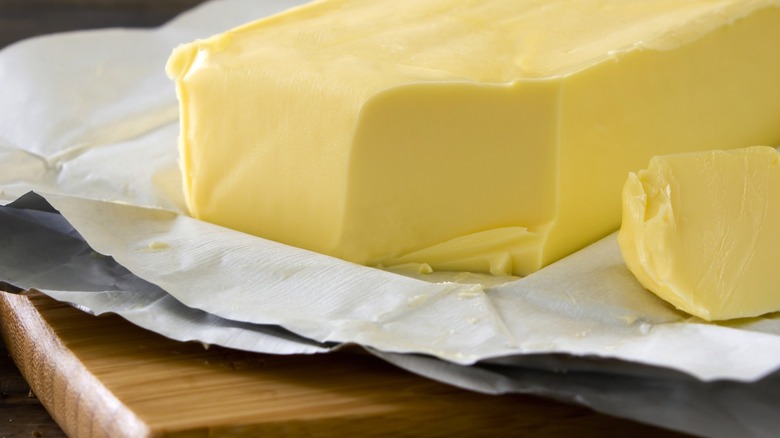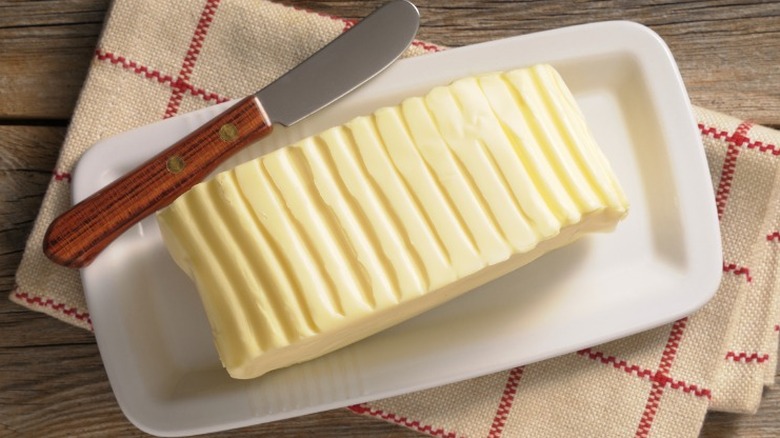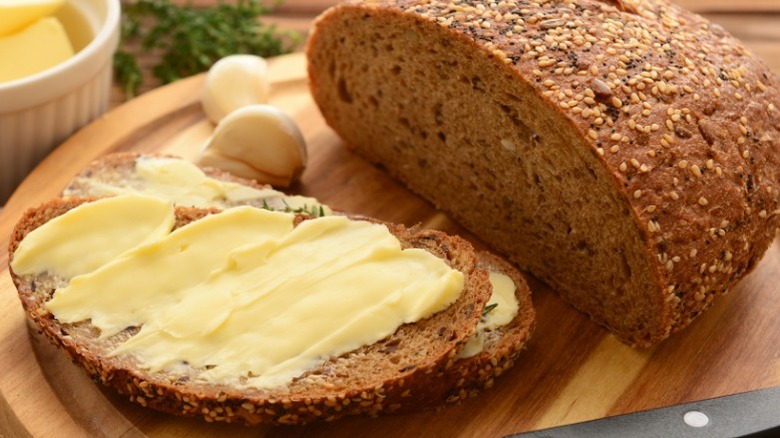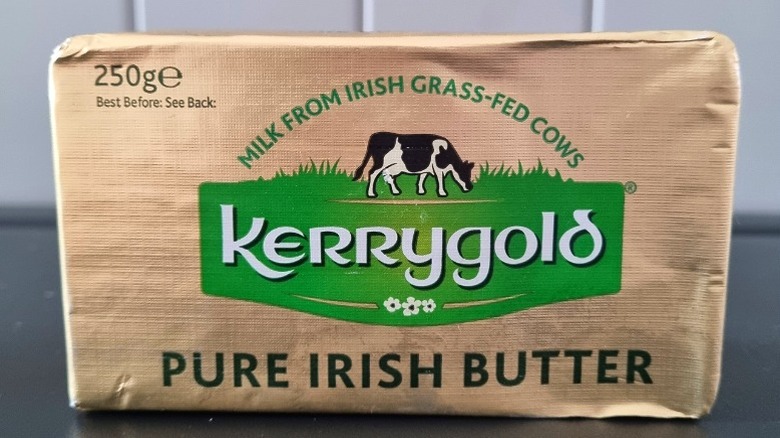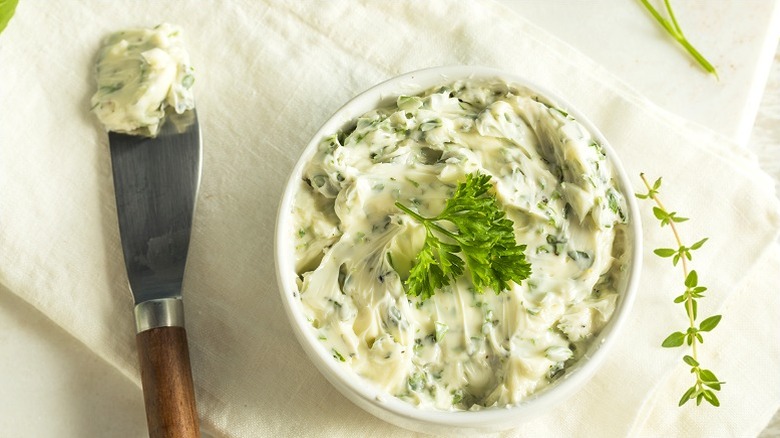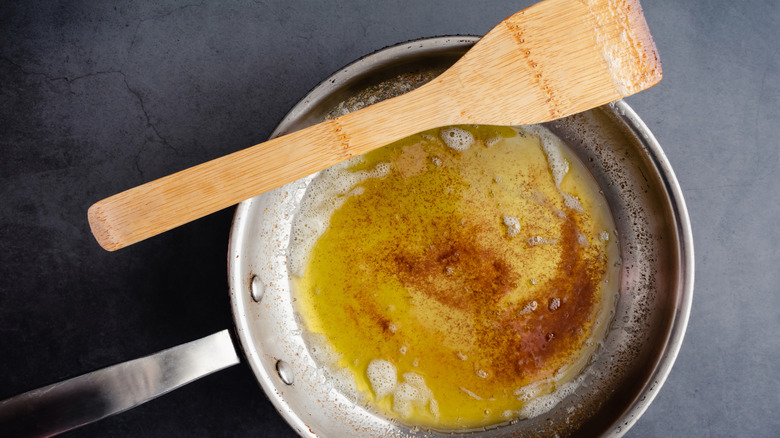The Reason Butter Usually Tastes Better At A Restaurant
If food lacks flavor, it might be because there isn't enough butter — or the chef isn't wielding the ingredient to its full potential. Restaurant butter is better when professional chefs use the right kind of butter for the job.
Some have a higher fat and salt content than others, and these factors can impact the cooking process. Butter is an essential part of the culinary world as a tool to enhance flavor, and it's the backbone of the béchamel and velouté French mother sauces. Southern, French, and Soul Food cuisines significantly emphasize using this fat because of its versatility and applications in baking and cooking. Believe it: restaurant food has much more butter than you think.
Restaurants store butter at room temperature
Butter should always be stored in a cold place for extended periods, but restaurants go through pounds of butter in a day and only need to keep some in the refrigerator. Softening butter doesn't require any assistance from "Chef Mic," as microwaving it can be finicky.
Instead, letting the butter rest at room temperature is enough to give it that creamy, spreadable quality that makes it easier to work with. Patience is a virtue when softening butter, but pounding or grating a stubbornly cold block is helpful in a pinch. Restaurant chefs know the texture should be smooth and moldable, but not melted or stiff.
Whipped butter is the perfect topping
Whipped butter is a light, airy spread often served alongside toasty bread rolls and biscuits. To make whipped butter, chefs mix in a bit of water, milk, or margarine to give it extra slickness when it glides across the top of a pancake stack.
Whipped might not be ideal for some cooking purposes given its airy nature, but it's a winner of a topping for baked goods. It's no wonder restaurants like Outback Steakhouse, Texas Roadhouse, and Cheesecake Factory's bread-and-butter is, well, literal bread and butter.
Restaurant butter may contain more butterfat
Not all butter tastes or functions the same. Many restaurant chefs prefer to use European or, specifically, Irish butter for its higher butterfat content. Butter sold in the U.S. must have an 80% butterfat content, but it can be higher in European countries where it's common to have an 82% butterfat content.
In Chowhound's store-bought salted butter ranking, Kerrygold scored the highest in the taste test. Salted adds a savory flavor to steak and vegetable dishes, while unsalted is better for baking sweet treats because of its more neutral taste.
Compound butter boosts flavor
Many restaurants, especially fine-dining establishments, have perfected the art of making and serving compound butter. Compound butter's formula is an easy one: just mix butter with other flavorful ingredients. Garlic is among the most commonly added ingredients because it packs a lot of flavor. You could also add lemon or olive oil with parsley, rosemary, or thyme; the combinations are endless and should be tailored to the dish.
Compound butter commonly tops steaks to give them that extra oomph of juiciness and flavor. It can also be spread across appetizers or used on plain noodles for a much-improved version of buttered noodles.
Browned butter might be the secret ingredient
Chefs brown butter by caramelizing its milk solids, giving it a bold, nutty taste with a fragrant, toasted smell. It takes a careful ratio of time and heat to perfect brown butter since it's easy to burn.
The result is a sauce that can be poured over food or used in various cooking or baking processes. Brown butter is easy to make and incorporate into recipes at home, and it's one of the secrets behind why restaurant dishes sometimes taste better.
